The “burning dwarf” is back. That’s what chamaedryoides means as in Urtica chamaedryoides, and it does sting, badly. Of all the plants and insects I’ve been stung by over the decades this one is by far the worst. It might just be me but our local Urtica sting feels like a jab from a six-inch wasp and the discomfort lasts for days. And no, Jewelweed juice didn’t help, nor Plantagos nor Dock nor urine (don’t ask.) A paste of baking soda did help reduce the discomfort until the site got wet … So much for the warning.
While nettles are a spring to summer plant in northern climes our local stinging nettle is just starting to get to the edible stage, a winter annual. They top out around a foot or so. I saw one about three inches high in Ocala in December. Some are around eight inches high now. While to the untrained eye there can be several similar looking plants just remember the main stem is bristling with clear glass-like hairs full of unrepentant acid. Leaf stems even leaf tops have stingers on them. Even leaf undersides have a few.
Not all nettles are small or formidable. My good friend Sunny Savage, who has travel-foraging videos, also has a line of clothing made from nettle fiber which she usually wears in her videos. She and husband Ryan and son Saelyn are doing some warm-water sailing… currently… Please visit her site here which as of this writing has a video about chanterelles on it. As for stinging, some nettles in England can be stripped by hand with little pain. A nettles species in New Zealand, however, has killed horses and cattle and at least one man. Putting less-threatening nettles in the fridge for a week can also render the stingers less formidable. You can also wild nettles next to a fire which oxidizes the stinging chemical(s) so you can eat them raw on the spot, perhaps the best way to consume them. If you are careful you can also curl up a leaf and eat it raw. I have a video on You Tube about them, click here, and you can read my article about them here. Sensitivity to the nettles might be individual in that Hoyt, a local friend and forager, isn’t bothered by them much at all. Their sting makes me very miserable, worse than fire ants in my opinion.
♣ Because the Greek Epiphany celebration was on Friday this year I had the opportunity to stay in Tarpon Springs Thursday and Friday nights then hold a class at John Chestnut Park on Saturday. It’s the largest epiphany event in the western hemisphere and is attended by thousands who are really there to go to a big party afterwards called a glendi (GLEN-dee)… a little retsina, some baklava for a chaser, a few opas, line dancing in the street on hard concrete… The main event was slightly unusual this year in that the participants — high school boys — couldn’t find the cross on the first tossed so a second went into the brackish drink, plan B. The second cross was then found and a while later the first cross recovered as well. Two winners and rumors of unsportsmanlike conduct… 20 minutes in water barely warm enough for the seven manatees in attendance will do that. The Greeks in Tarpon Springs trace their ancestry back more than a century to the sponge divers from the eastern 12 islands of Greece where diving for the cross is a tradition. My ancestors are from an areas of the mainland called The Mani, and had enough sense to not jump in cold water in January.
While Tarpon Springs is at about the same latitude as Orlando it’s 130-some miles west on the coast, read different plant communities and weather. Staying just a quarter mile from where the teenagers jumped into the January water, I had a chance to wander around and look at local suburban edibles. Bauhinias were in blossom but have ceased inland. Sunny, above, likes to use the blossoms in salads. One of the more unusual plants is Passiflora lutea which I’ve only seen on the west coast. The fruit is edible, neither great nor bad, but was used to make ink which should tell you something. Interestingly the two coasts share a genus but different species. I tend to see Bull thistles on the east coast, Nuttall’s Thistle on the west, or the Swamp thistle. All three are Cirsiums and all Cirsiums are edible though the flavor can vary from bitter to mild to salty.
♣ Articles archived this week include: Edible Flowers: Part 10, Canna Confusion, and Guinea Pigs.
♣ Botany Builder #11. Root, rhizome, tuber, bulbs, corms. What’s the difference? Generally speaking a root is below the plant and a rhizome is off to the side, but roots aren’t always that tidy. There are other characteristics we’ll discuss in a moment but in grand terms knowing the difference tells us how to harvest. For roots generally you dig down, often deep, for rhizomes you did out, often just below the surface.
The tap root of a pine goes straight down and is not flexible, which is why pines often snap off in strong winds. The fragile root of a Spurge Nettle is directly below the plant about a foot down. The cattail rhizome, however, is off to the side. Dig down from the bottom of a cattail and all you will find is muck. Often a cattail rhizome will have spaghetti-like rootlets growing off them called stolons. Ginger is perhaps the best-known cultivated edible rhizome.
Tubers are swollen roots or bottom of stems. The potato is a tuber of fame, as are yams. The groundnut, despite the name, is a tuber and almost impossible to misidentify because of the way it sets tubers. Tubers have “eyes” from where new plants can grow from. Jerusalem artichokes are tubers, too.
Bulbs are made up of fleshy scales which are modified leaves. The onion is a bulb. It looks like it has layers. Tulips are bulbs but have to processed correctly to be edible. Bulbs usually have roots on one end and a growing tip on the other, again think onion. Don’t confuse bulbs with bulbils. Bulbs are underground, bulbils are in the air, usually growing on vines next to leaves or on stems as the Tiger Lily does.
Corms are similar in function to tubers but are actually short swollen underground stems. They look similar to bulbs but do not have layers like an onion. The Jack in the Pulpit is a corm, and barely edible after processing. Perhaps the most well-known corm is Taro. Corm plants tend to regrow from the same corm or location season after season.
Rhizomes, tubers, corms, bulbs (and sometimes roots) are ways to store plant food under ground. Technically the first four are geophytes and made by only herbaceous plants rather than trees or shrubs. As one might presume sometimes it is difficult to determine exactly what the storage system is which is why sometimes you will read that “roots” also store plant food. ‘Tis fodder for botanical debates.
Plants usually store food for reproduction. Many plants — bull thistles and turnips for example — store food the first year then flower and reproduce the second year. That is why most root vegetables are harvested in the fall or in the spring before the season has begun.
♣ Green And Didn’t Know It. The next time a conversation turns to being green you can cite several things you do that you might not on first blush think of being green. Among the New Year “green” resolutions recommended by those write about such things are eat more nutritious and organic food. That certainly describes many of the weeds we eat. They also say avoid prepackaging. Edible weeds don’t come prepackaged. “Grow your own food” was another bit of green advice. I know many foragers who take home wild seeds to grow their own, scattered here and there. I must admit I have spread a lot of edible seeds on various properties so I could harvest them next year. More on growing weeds next week. And if you use cast iron cookware you’re green because cast iron pots and pans last a lifetime or more. You’re not buying new pans every few years. You can read about taking care of them here and see a video here.
My tiny contribution to being green is to cook chicken on a regular basis in my solar oven. But we had two cold days this past week, by Florida standards, almost freezing. Thus I had a fire in my fireplace to keep warm and not add to power bill which I try to keep in the mid-$30’s year round. It takes about three hours to cook a four-pound chicken in the solar oven, about four hours near a fireplace. You don’t need a rotisserie. A leather cord hung from the fireplace has the strength and tension to suspend and spin a chicken. Just wind the chicken up and let it twist back and forth. You need to rewind it every 15 to 20 minutes but it is the old-fashion original rotisserie chicken.
♣ Had great people in classes this week. I want to thank everyone particularly at the John Chestnut class for being understanding as the class was quite large. And a thank you to Diane as well for sharing her botanical expertise. The biggest surprise at John Chestnut Park was fruiting Creeping Cucumbers. They are usually not to be seen now, or at least not fruiting as these were, and blossoming. Perhaps that hot weather we had a couple of weeks ago was a Mother Nature white lie telling them spring was here. Another wild “edible” seen was a bee’s nest in the knot of a tree. That is not unusual because a cypress a few hundred feet away also has a nest though no where near as visible. Honey is a food many hunter/gatherers would endure many stings for. One could easily see the geometric shape of the exposed hive in this new nest which was unusual. However… he said…. the open hive faced east southeast and most bad weather at that location comes from the west. The other nest also faces east. Maybe bee brains know a thing or two.
Sunday in Winter Park we found Pellitory (Cucumber Weed) in more advanced stages of growth than it was on the west coast. Also some chickweed was going out of season. It is perhaps the shortest lived of all our winter annuals. You really have to use it when you find it. If you decided to go back in a few days chickweed is often already past by. Peppergrass, not seen this time at the John Chestnut class, was sparse in Mead Garden (I think lawnmowers were to blame.) We also located a large Dioscorea alata root. That’s like finding ten to 20 pounds of potatoes.
Below is my upcoming class schedule, for details and updates see my “classes’ page. Port Orange is interesting in that it has a hammock community and several plants that are salt tolerant and not found at other foraging locations. The Jacksonville location has a wide variety of edibles from Apios to Youngia.
Saturday, January 14th, Spruce Creek Park, 6250 Ridgewood Ave. Port Orange, 9 a.m.
Sunday, January 15th, Florida State College, south campus, 11901 Beach Blvd., Jacksonville, 9 a.m.
Saturday, January 21st, Wickham Park: 2500 Parkway Drive, Melbourne, 9 a.m.
Sunday, January 22nd, Dreher Park, 1310 Southern Blvd., West Palm Beach, 9 a.m.
♣ Newsletter Quandary: When I asked if this newsletter should remain weekly or go twice a month, the immediate and sustained response was stay weekly. This leads me to a second issue about newsletters. Which is better and why? To have 5000 subscribers and 1000 readers weekly (on average) or 2000 subscribers and 1000 readers weekly on average? In one case 20% are reading it weekly, in the other 50% are reading it weekly though the number of readers stays the same, 1000. Does it make a difference to search engines, to advertisers, or to whomever? Incidentally this newsletter has to be opened to count as read. Right now my open rate is two thirds and my click through rate is also two thirds. But that was achieved only by deleting subscribers who did not open any newsletters for six weeks or more. It comes down to which is better and why? Lots of subscribers but a low open rate because most of them don’t read the newsletter every week, or a modest number of subscribers but a very high open rate because almost all of them read it every week? Or is it moot?
PS: If anyone has a good patch of Carpet Weed I’d like to take a picture of it, or Wild Garlic with cloves. Thanks.
To donate to the Green Deane Newsletter click here.

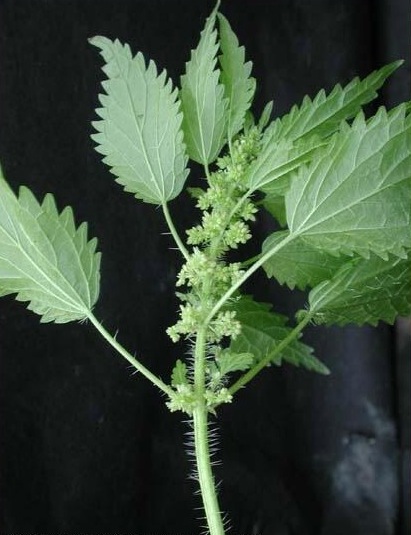
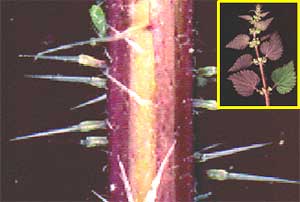


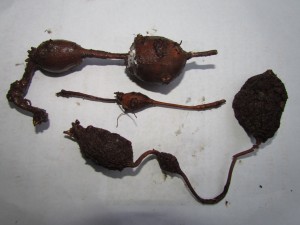
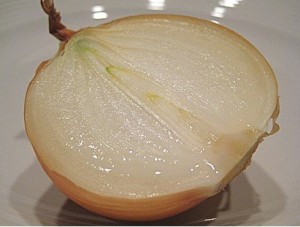
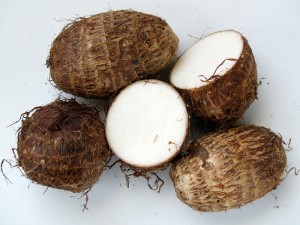
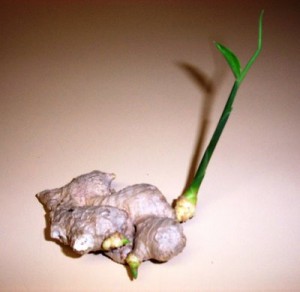
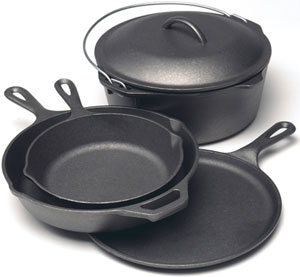
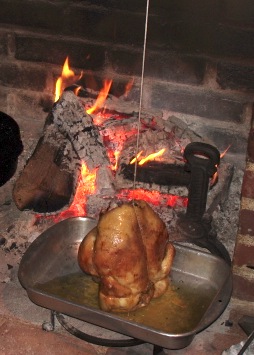
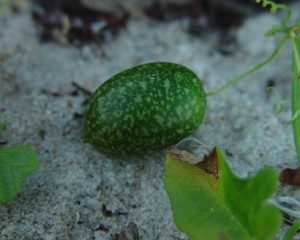


What a dynamic newsletter! This one is simply packed with a tremendous amount of material, I am very impressed and thank you for the information.
Do keep your newsletter weekly – I always look forward to seeing in my inbox.
I browsed a few times through your site before I realized you were Greek. We live in the country outside of Thessaloniki. While many Greeks know how to gather horta (wild greens), neither my husband and I know much about the whole thing other than how to enjoy them at the table with olive oil and a squeeze of lemon. Clearly there is a whole world of Greek edibles beyond vlita and more, now than ever, it feels essential to know what they are. However, most of the plants you write about on your blog are written with north American readers in mind. I THINK I recognize quite of the wild edibles you’re describing…but it sure would be helpful if you could make a note if a particular plant is also found in Greece. Or perhaps you could recommend a book or site about wild edibles in Greece..? Come summer I’ll have a whole pasture of what looks like Queen Anne’s lace; I’m ready to start making fritters!
Do you ever come down to Manatee county? I live on a “SWIFTMUD” preserve and there are lots of weeds, shrubs and trees. I am learning, but it is over whelming. I’ve identified Crepis and ceasar weed. There are a bunch of thistles but I don’t know which kind. The entire plant hurts!
Close. My Highland Preserve class is just a few miles from Manatee County. The plants are the same.
Keep it weekly. Love your vids and your style. Unique and very thorough.
BTW… I tried a new plant today.. it was growing near some young henbit and chickweed… the plant grows low to the ground in a mat, is very delicate with small, succulent stems and opposite enlongated leaves… the leaves resemble a much smaller version of a mimosa or acacia leaf… 1/8″ wide and 3/8″ long… to be honest, i know it was risky, but i did put it in my mouth as it smelled delicious… tasted sort of like purslane… I did not swallow 🙂 any ideas? I live in central alabama.
Hmmm, take a picture and send it to me.
Hey Green… I took a couple of pictures… I swear the one plant looks like a small rosette watercress, but it is not growing in water, but on disturbed ground on the north face of a house i am in the process of building… small white flowers and a small delicate tender stem with seed pods like collard or mustard plants except a much smaller version… each stem around the rosette has alterating leaves getting slightly larger the closer toward the end of the stem and one larger leaf at the end… the other plant was growing nearby amongst some young henbit and chickweed… i took a picture of both.. use them as you like…
I was working in the woods in North Florida yesterday and ate many, many handfulls of blueberries (sparkleberries and greenbriar berries). I have never had such a blue-stained mouth (and lips) in all my life! I would like attend a Jacksonville class, but the only ones I see are on Sunday, and I’m at church. Thanks for the informative newsletters! I’m one of the readers!
I have heard that if you have arthritis, “beating” yourself with nettles will improve the situation. Any comment on this?
Even if it didn’t the pain would help you forget your arthritis for a while.
Hey Deane, sorry i missed Palm Harbor, but my move to St. Pete got delayed and had no means to contact you. I’m here now and hope to see ya again soon. Peace